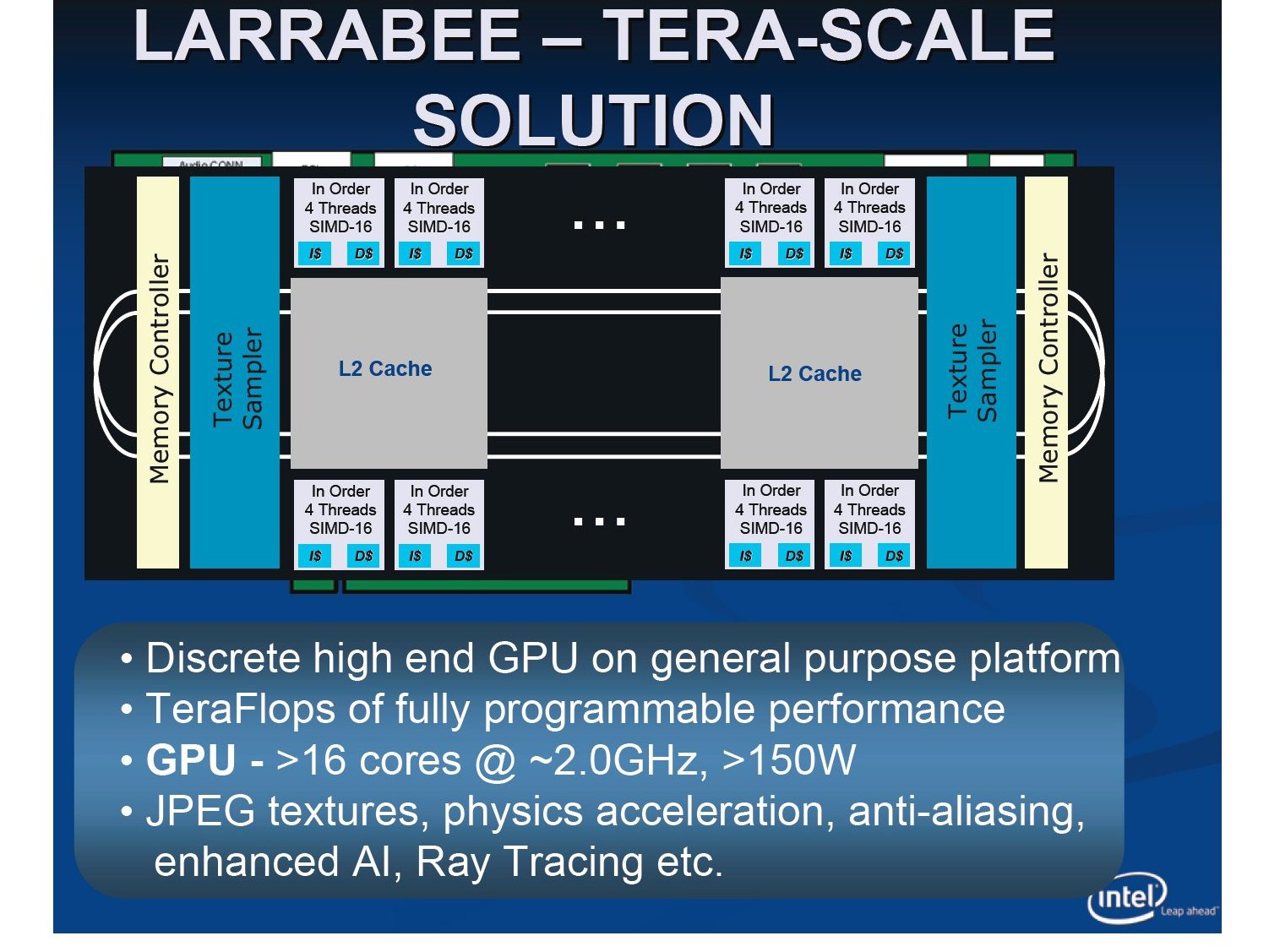Intel and Nvidia: grand graphics alliance?

Could Intel and Nvidia be preparing to unveil a grand PC graphics technology alliance? That's the latest rumour following the release of further details of Intel's in-house graphics project, known as Larrabee. But is it true?
As we reported back in April, Larrabee is an all-new processor design from Intel that is due out in 2009 and majors on floating point power. Larrabee processors are expected to come in several forms including a dedicated graphics processing chip.
However, according to website TGDaily , Intel will actually be teaming up with Californian graphics company Nvidia to produce the new chip. Engineering work for the new processor will be shared between the two companies.
Intel's engineers will design the floating point units used for shader calculations while Nvidia will supply the circuitry required to rasterise and output graphics.
Intel and Nvidia already have an existing patent cross-licensing agreement, so closer co-operation between the two companies is certainly plausible. Especially in the context of the recent acquisition of Canadians graphics outfit by Intel's main rival AMD .
In any case, TGDaily has certainly stumbled upon some interesting new facts regarding Larrabee. In a document recently released but not widely publicised, Intel confirms the Larrabee project will initially give birth to two chips.
The first is the aforementioned graphics chip composed of 16 Larrabee cores and a slew of dedicated 3D output hardware and video memory. This flavour of the Larrabee processor will reside on an add-in board just like existing graphics cards. In other words, it will go head to head against high performance video boards from Nvidia and ATI.
Sign up for breaking news, reviews, opinion, top tech deals, and more.
The second design is a so-called general purpose chip that will be capable of running the full x86 instruction set. However, with a total of 24 cores, it will deliver truly mind-bending floating point power - as much as one trillion floating point operations per second.
Incredibly, that's approximately 40 times the floating point power of an existing Intel Core 2 dual-core processor. This version of Larrabee probably isn't suited to all-round desktop processing. Intel has another, completely separate road map of Core 2-based chips to cater for that market.
But for specialist applications such medical calculations, for example protein folding à la Folding at Home, and perhaps even high-end gaming with sophisticated physics simulations, Larrabee will be a very interesting indeed.
Dan (Twitter, Google+) is TechRadar's Former Deputy Editor and is now in charge at our sister site T3.com. Covering all things computing, internet and mobile he's a seasoned regular at major tech shows such as CES, IFA and Mobile World Congress. Dan has also been a tech expert for many outlets including BBC Radio 4, 5Live and the World Service, The Sun and ITV News.